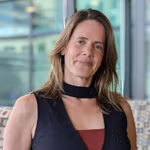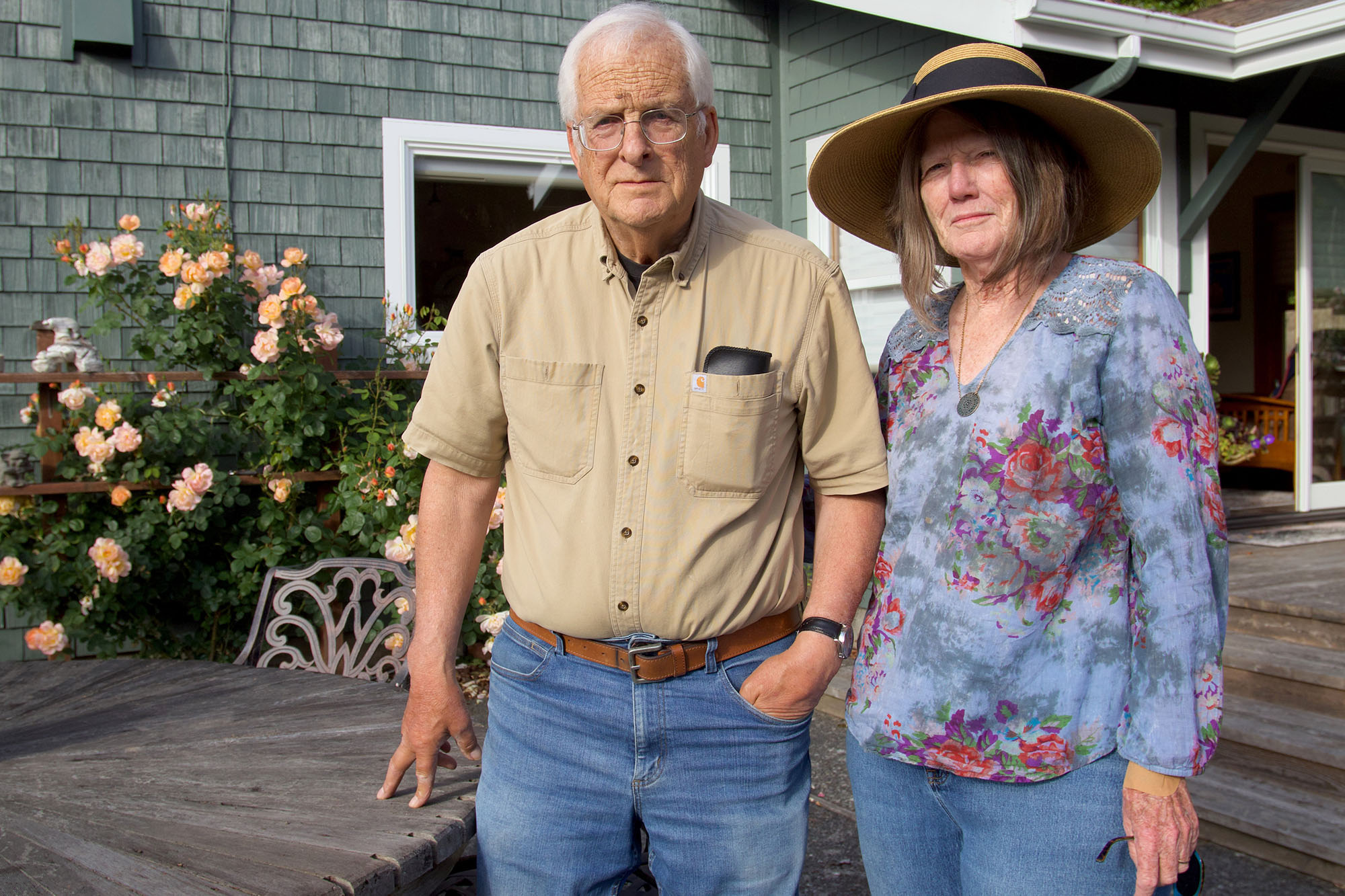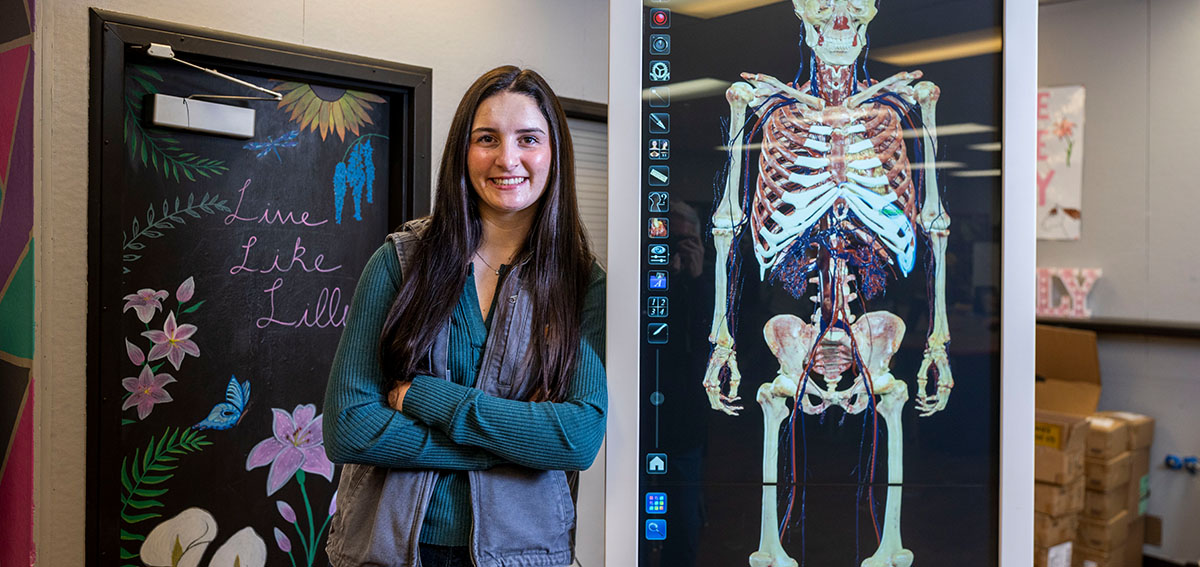
When she was a little girl, Sequoia Hall of the California Health Care Foundation spent a lot of time in hospitals witnessing doctors caring for her mother, who suffered from a chronic disease. For a time Sequoia dreamed of going to medical school, but she was captivated by another passion: guiding “people who look like me, who come from where I come from” into the medical field. “There are so many ways to save lives,” she said. “With this work in workforce development, you’re not just saving one life, you’re saving families.”
Last year, Hall joined CHCF as a health equity fellow pursuing programmatic opportunities to diversify the health care workforce, among other goals. She is thrilled her first CHCF grant supports the California Medicine Coalition’s new California Medicine Scholars Program (CMSP). The program is a streamlined pathway for the many young people of color who begin higher education at community colleges as a step toward medical school and beyond. The pilot program was imagined in the pages of the California Future Health Workforce Commission report and then funded by the state with a $10.5 million budget allocation through the Department of Health Care Access and Information (PDF). I spoke with Hall about CMSP’s impending contribution to the California health care landscape. This transcript has been lightly edited for length and clarity.
Q: Why does California need CMSP?
A: The California Medicine Scholars Program, part of the California Medicine Coalition, is going to bring together community colleges, universities, medical schools, health employers, and clinics across the state to work toward one goal: shepherding more students of color from community college through medical school and beyond. CMSP is needed because California’s health workforce doesn’t look anything like its population. For example, only about 6% of California physicians are Latinx. That’s an insufficient number when you consider that 39% of Californians are Latinx people.
The plan is to recruit 200 students per year to participate in this program. Stipends, scholarships, mentoring, academic support, and professional development opportunities will be available as students move to four-year universities and then on to medical school. That’s what health equity is about. We’re essentially dismantling systemic racism and the barriers students of color face as they move through the pipeline. When a health care professional understands the culture and speaks the same language as the patient, it increases the quality of care and lessens the chance for misdiagnosis. I see this program as a model that is going to prepare future physicians for medical practice, while supporting thriving lives in their communities.
Q: Your deep personal interest in building a more diverse health care workforce isn’t new. You worked for a decade at the Alameda County Health Pipeline Partnership. What made you so passionate about these workforce issues?
A: I didn’t realize it at the time, but my appreciation for the importance of culturally competent care began when I was a youngster, and my mother was struggling with sickle cell anemia. My mother was only 56 when she passed away, and she never had a doctor that looked like her. We knew every time we went to the hospital that we were going to have to advocate for her care. She had cultural differences with her providers that complicated things. For example, when my mother was in the hospital, she wanted her family to stay with her. These needs went unmet. Her hospital stays would be longer than they needed to be because she would be in a depressed state. This was a cultural thing. It weighed on her spirit to be in the hospital. When patients do not feel understood, they have trouble trusting the doctors and hospitals. A physician who understands your culture is going to approach you a little differently.
In the almost 10 years I spent at Alameda County, I saw at least 20 students graduate from medical school and another 30 to 50 go on to nursing or physician assistant training. Hundreds went into allied health roles. The model was similar to CMSP’s. Fifteen community-based organizations worked together to serve disadvantaged youth of color to create a seamless trajectory from middle school to postgraduate work. That’s what I’m most proud of. I watched these students go through all the nuances of applying to nursing school and medical school and then get in. Seeing the success stories was super powerful and rewarding.
Q: What excites you most about the CMSP project?
A: My vision is an equitable health care workforce that reflects the rich ethnic and cultural diversity of California’s communities. As a person who relied on Medi-Cal as a child growing up in Salinas and attending lower-performing public schools, I know about the systemic barriers that work against students of color. A program that seeks out young Black, Latinx, and Native American people who go to community college can enable us to bring those cultural backgrounds into the health professions. That really is California serving Californians. This is what excites me about CMSP! CMSP’s mission is aligned with my personal mission and CHCF’s mission as well.
I’m also thrilled that the project is in such excellent hands. Rowena Robles, PhD, the California Medicine Coalition’s executive director, and Coyness L. Ennix Jr., MD, a cardiac surgeon and the coalition’s board chair, are working with so many others to help California develop the abundant talent from underresourced communities and build a more representative health care workforce. This is such an exciting time to be in the workforce pipeline space. California regions will be showcasing their future physicians, and the entire state will know!
Q: Why does the project put such a strong focus on community colleges?
A: That’s where so many students of color start their college careers. In California, about 40% of Latinx college students start their higher education in community college. That’s a huge opportunity to encourage students of color to pursue premedical training. We’ve seen that students who pursue health pathways at community college are more likely to complete their training. More than half complete a credential within six years, compared with 25% of career education students who earn a credential within six years. CMSP intends to hold on to those students and guide them toward a four-year university, a medical school, and beyond.
Of course, not everyone will opt to go that route, and the road will have some off ramps. Not everyone will become a doctor, and that’s okay. Some students might move toward a career as an allied health professional or a nurse. The point is that they’ll have the chance to find a rewarding career in the health care field.
Q: How is CHCF contributing to the CMSP?
A: CMSP is a pilot program that’s the first of its kind. While the state is providing the lion’s share of the funding, this is a start-up, and private dollars are needed to be able to get the program up and running. CHCF is at the forefront of the private funders who are participating.
The state dollars are primarily supporting eight regional hubs across California, which include four-year universities, medical schools, local health clinics, and other community-based organizations that are supportive of the student pipeline. Private dollars will be supporting the central CMSP office, which will administer the program and oversee the regional hubs. The office will also provide statewide career conferences for students and statewide access to scholarships and stipends. It will also provide statewide support for policies and structural changes within the education system.
CMSP will establish a research and data center that seeks to track participants across the state, from community college to medical school and beyond, as well as those students who take an off ramp. The center will track the successes and challenges that are coming up for the regional hubs. The information will help support decisionmaking, as well as drive system change across California to support the future health workforce. For example, the research center will explore how we can reduce barriers to matriculation into medical school for young people of color in California.
Q: Imagine it’s five years from now. What do you hope the CMSP will have accomplished by then?
A: The plan is for CMSP to become an institutionalized opportunity in higher education for underserved, underresourced students of color in California. In five years, we are hoping that this one-time funding from the state becomes an ongoing investment in moving youth and young adults of color into the primary care workforce. We also hope this model will be seen as useful by other states. California is not the only place that’s suffering from an unrepresentative health workforce.
The official request for applications to establish a regional hub for the California Medicine Scholars Program can be found on the California Medicine Coalition website. To attend one of the informational webinars that will be presented on March 11 and March 24, register with the coalition. The application deadline is April 15.
Authors & Contributors


Sabrina Sellers
Sabrina Sellers is a self-taught freelance photographer based in Oakland. She was a ballet dancer on the professional track until sustaining a spine injury. Sabrina then channeled her creative energy into photography. Growing up as a Black ballerina has inspired much of Sabrina’s photographic passion. She understands the importance of seeing oneself represented within predominantly White, male fields, and she works to highlight underrepresented voices in her work. She is a frequent contributor to the San Francisco Chronicle, among other publications.





